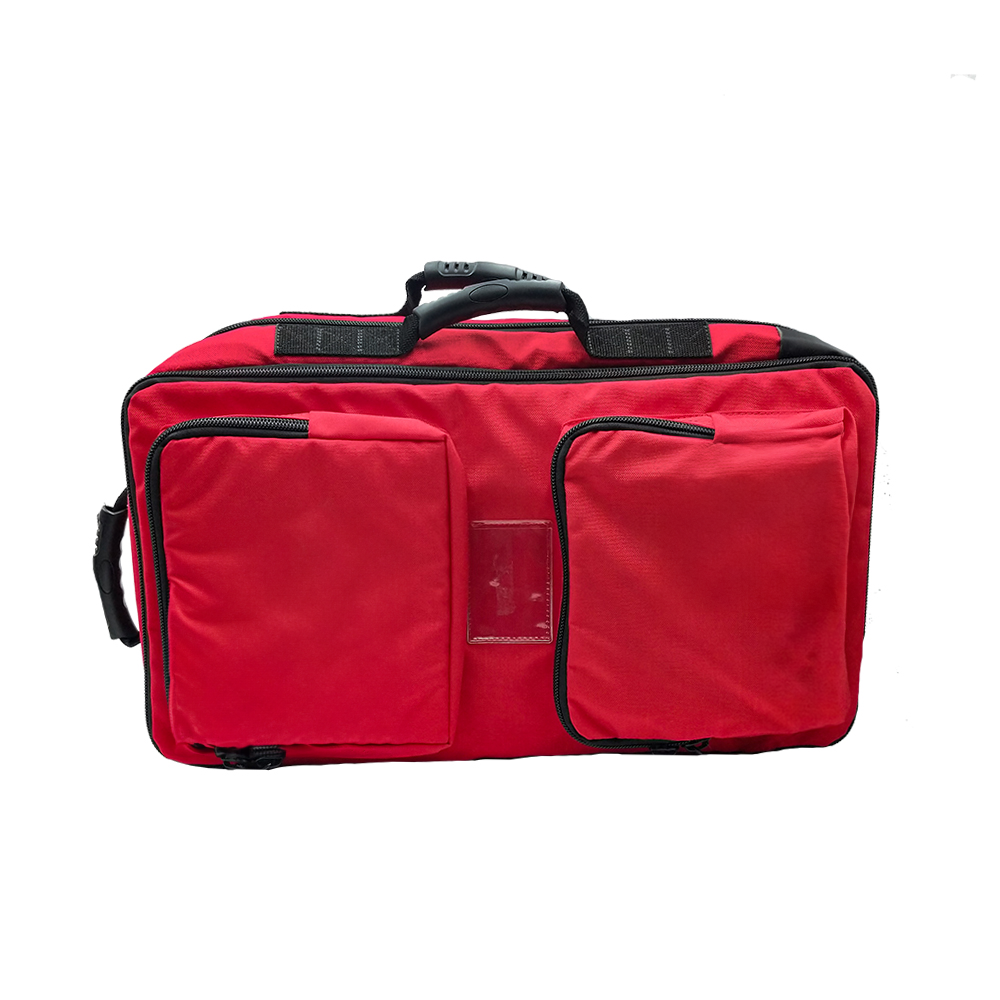When designing or commissioning a custom bag, one of the first and most important decisions you’ll make is the choice of fabric. Material not only influences the bag’s look and feel but also determines its durability, weight, water resistance, and long-term performance. Among the most commonly used fabrics in bag manufacturing are nylon and polyester—two synthetic materials with different strengths and characteristics.
As a U.S.-based contract sewing company, we at Fieldtex Products frequently help our clients choose between these two materials when designing backpacks, duffle bags, soft cases, and other sewn products. Here’s a breakdown of how nylon and polyester compare, so you can choose the right material for your project.
Nylon for Bags: Durable, Lightweight, and Water-Resistant
Nylon was the first commercially successful synthetic fabric, originally developed in the 1930s. Made from long chains of polyamide molecules, it’s prized for its strength, elasticity, and lightweight feel, making it a go-to for many high-performance bags.
Key Benefits of Nylon:
- Durability: Highly resistant to wear, stretching, and abrasion.
- Lightweight: Ideal for travel or outdoor gear where every ounce counts.
- Water Resistance: Repels moisture well and dries quickly.
- Mildew & Fungi Resistant: Great for humid or wet conditions.
- Dye-Friendly: Can be produced in vibrant colors or treated for different textures.
- Low Maintenance: Easy to clean and retains shape well.

Nylon is commonly used in military-grade bags, travel backpacks, and outdoor adventure gear due to its toughness and performance under stress.
Polyester for Bags: Affordable, Strong, and Versatile
Polyester is another synthetic material derived from petrochemicals, but its molecular structure gives it slightly different traits from nylon. It’s known for its affordability, color retention, and resistance to shrinking and stretching.
Key Benefits of Polyester:
- Durable: Resists stretching, shrinking, and wrinkles.
- Affordable: More cost-effective than nylon in most cases.
- Color Retention: Holds color well through time and exposure.
- Water-Resistant: Good moisture-wicking abilities.
- Low Maintenance: Machine washable and dries quickly.
Polyester is often used in budget-friendly tote bags, casual backpacks, and promotional gear, where longevity is still important but cost and customization are key priorities.

Nylon vs Polyester: Side-by-Side Comparison
To make the decision easier, here’s a quick comparison of the two materials across critical performance areas:
Picture 3: Table comparing nylon and polyester across key traits.
| Feature | Nylon | Polyester |
|---|---|---|
| Durability | Excellent | Very Good |
| Weight | Lighter | Slightly Heavier |
| Water Resistance | High | High |
| Cost | Higher | Lower |
| UV Resistance | Lower | Higher |
| Color Retention | Can fade over time | Excellent |
| Texture | Smooth, silky | Slightly coarse, matte |
| Use Cases | Outdoor gear, tactical bags | Promotional bags, fashion bags |
Other Fabric Options to Consider
While nylon and polyester are two of the most common materials, there are other fabrics that may better suit certain bag applications:
- Canvas: A natural fiber known for durability and structure. Often used for tote bags and heritage-style backpacks.
- Vinyl (PVC or PU-coated fabrics): Highly water-resistant and easy to clean. Ideal for medical bags or utility cases.
- Neoprene: Flexible and padded, making it great for electronics sleeves or soft-sided protective cases.
Picture 5: Collage showing bags made of canvas, neoprene, and vinyl—each with its own aesthetic and performance advantages.
Final Thoughts: What’s the Right Choice for Your Bag?
Choosing between nylon and polyester often comes down to your project’s priorities. If you’re making a performance-driven or heavy-duty bag, nylon may be worth the extra investment. If you need a reliable, budget-friendly option with excellent customization potential, polyester could be the better choice.
At Fieldtex Products, we help clients make material decisions based on use case, performance requirements, and cost goals. Whether you’re producing 100 tactical packs or 10,000 branded totes, our team can help guide your material selection to match the job.
